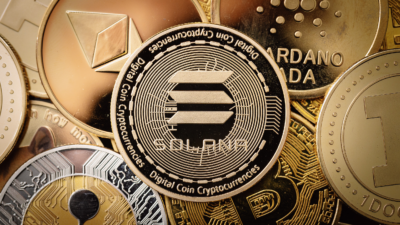Allspring’s Latest Clones Are Active Growth, Value ETFs
Allspring Global Investments recently added two new ETFs, following its entry to the market late last year.

Sign up for exclusive news and analysis of the rapidly evolving ETF landscape.
Investors want what they want — and that means more ETFs.
One of the newest entrants to the exchange-traded funds market, Allspring Global Investments, rolled out its second batch of products late last month, a pair of active equity funds that the company said clients have been clamoring over. The firm — which rebranded from Wells Fargo Asset Management in late 2021 — added its first ETFs, a trio of active bond funds, last December.
Product development in active ETFs has hit a fever pitch of late. New ETFs have raced into the market at a dizzying pace, and the category now represents about $1 trillion — a staggering figure, given that the active ETF market only started its rapid growth a few years ago.
Attack of the Clones
The two new products, which began trading March 27 on NYSE Arca, are the Allspring LT Large Growth and Special Large Value ETFs. The packaging is new, but the strategies are not.
“They are cloned off of longstanding strategies with terrific track records,” said Rick Genoni, who leads the firm’s ETF initiative. The large growth strategy has been offered as a retail separately managed account since 2011, and the special large value strategy, which started in 2010, comes in several wrappers, including a mutual fund and SMA. Each of the strategies represents about $3 billion.
“We are increasingly seeing managers launch ETF versions of existing in-house strategies to bring a more wealth management audience,” said Todd Rosenbluth, head of research at TMX VettaFi. “There is no reason to cannibalize an investor base when expertise can be tapped into with a product differentiated from a mutual fund.”
The new AllSpring ETFs, which are intended in part to be building blocks within model portfolios, would attract new investors as well as those who use the strategies in the firm’s other wrappers, Genoni said. Clients benefit from the tax efficiency of ETFs, the lower costs (each charges 35 basis points), portfolio transparency, and liquidity, he said. Those perks are not lost on the wider market:
- More than 800 active ETFs have hit the market since 2023, according to Morningstar.
- 95% of investors globally plan to increase ETF allocations over 12 months, survey data from Brown Brothers Harriman show.
Waiting Game. A major issue for the industry is the potential approval of ETF share classes of mutual funds, something that the Securities and Exchange Commission is prioritizing. But it’s unclear what restrictions fund companies will have and when a rule will be presented, much less go into effect. Because of that, some asset managers aren’t waiting to get their strategies into ETF form.
“The SEC has raised questions as to ensure the fair treatment across all investors in those strategies, should those share classes be rolled out,” Genoni said, adding that it may be a while before companies add such share classes. “We don’t necessarily want that to hold us up from rolling out strategies.”






